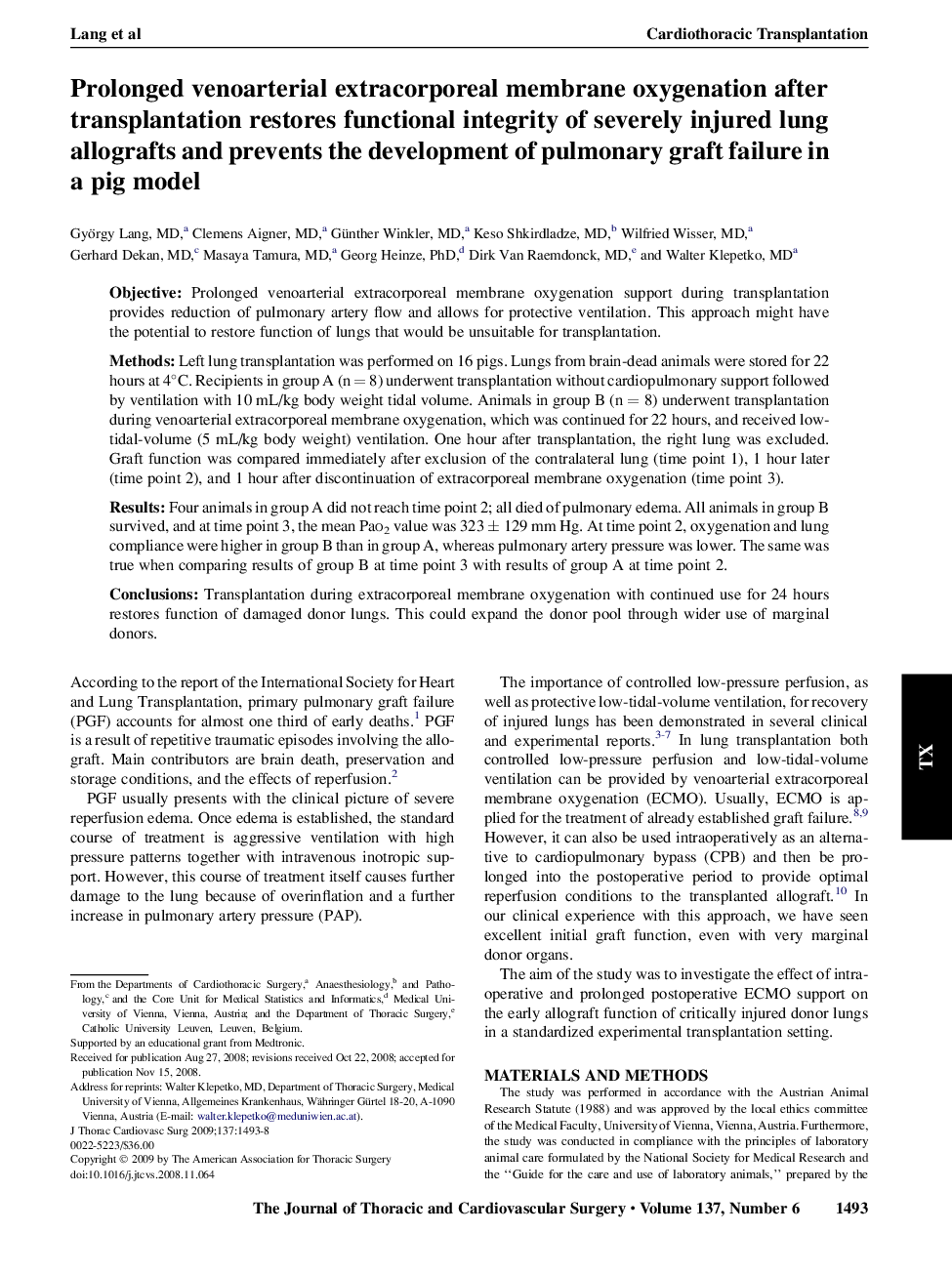| Article ID | Journal | Published Year | Pages | File Type |
|---|---|---|---|---|
| 2985494 | The Journal of Thoracic and Cardiovascular Surgery | 2009 | 6 Pages |
ObjectiveProlonged venoarterial extracorporeal membrane oxygenation support during transplantation provides reduction of pulmonary artery flow and allows for protective ventilation. This approach might have the potential to restore function of lungs that would be unsuitable for transplantation.MethodsLeft lung transplantation was performed on 16 pigs. Lungs from brain-dead animals were stored for 22 hours at 4°C. Recipients in group A (n = 8) underwent transplantation without cardiopulmonary support followed by ventilation with 10 mL/kg body weight tidal volume. Animals in group B (n = 8) underwent transplantation during venoarterial extracorporeal membrane oxygenation, which was continued for 22 hours, and received low-tidal-volume (5 mL/kg body weight) ventilation. One hour after transplantation, the right lung was excluded. Graft function was compared immediately after exclusion of the contralateral lung (time point 1), 1 hour later (time point 2), and 1 hour after discontinuation of extracorporeal membrane oxygenation (time point 3).ResultsFour animals in group A did not reach time point 2; all died of pulmonary edema. All animals in group B survived, and at time point 3, the mean Pao2 value was 323 ± 129 mm Hg. At time point 2, oxygenation and lung compliance were higher in group B than in group A, whereas pulmonary artery pressure was lower. The same was true when comparing results of group B at time point 3 with results of group A at time point 2.ConclusionsTransplantation during extracorporeal membrane oxygenation with continued use for 24 hours restores function of damaged donor lungs. This could expand the donor pool through wider use of marginal donors.
